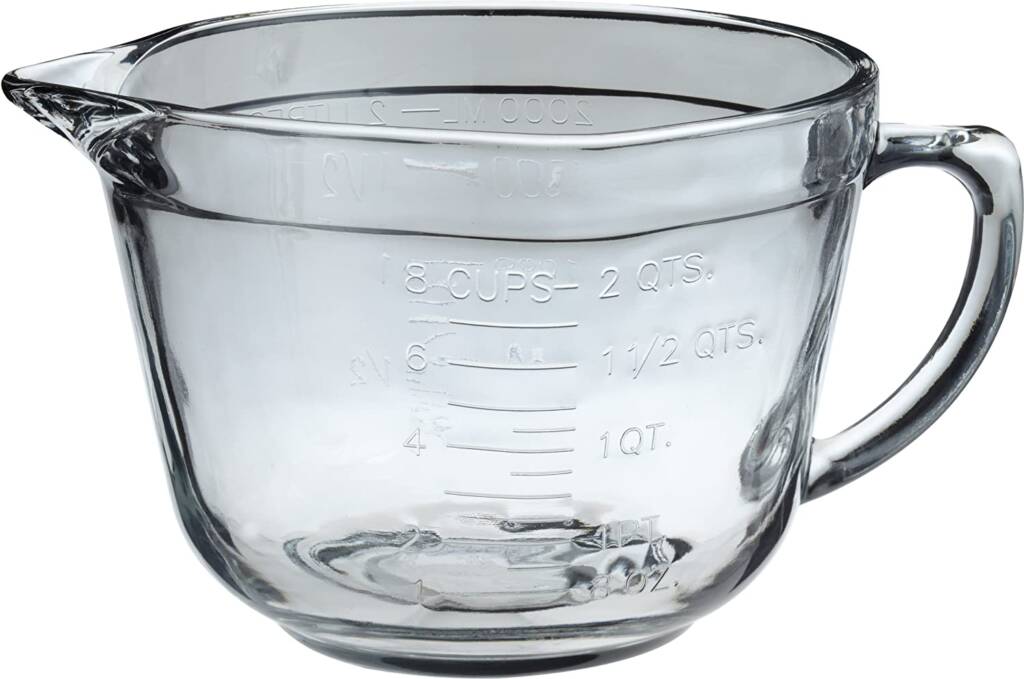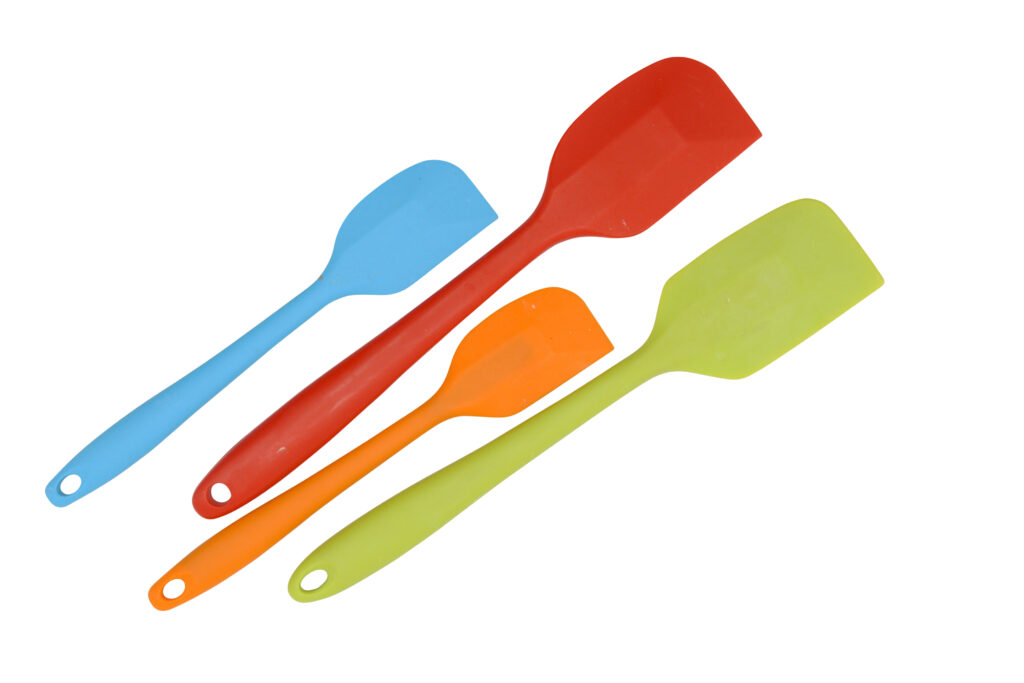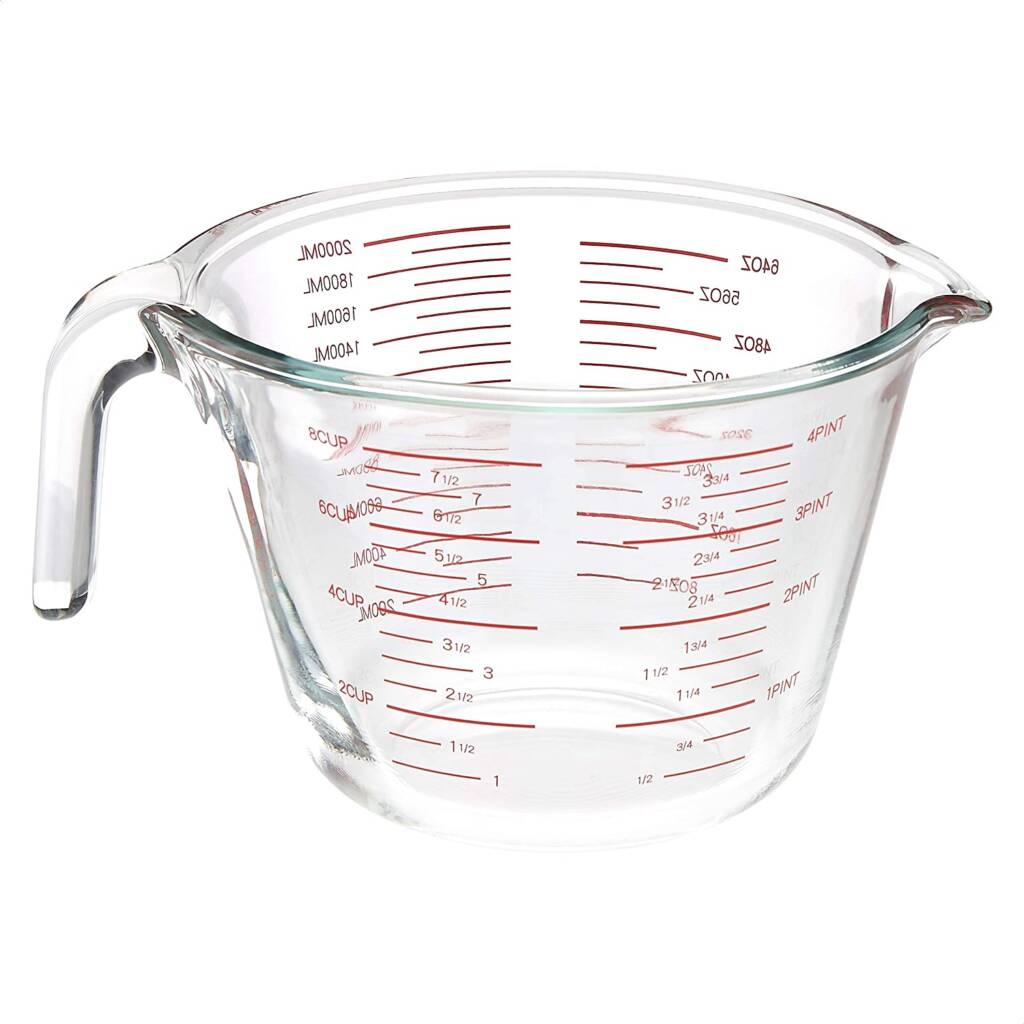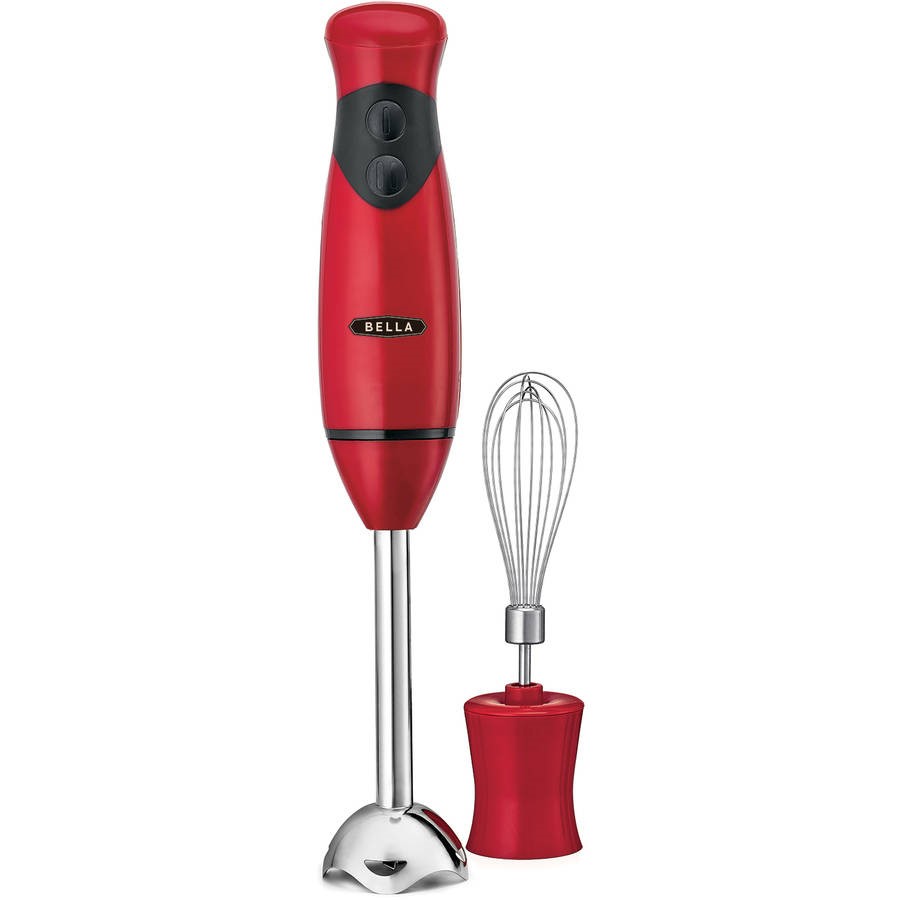Soap making level – BASIC
Making infused soap with tea is fairly a simple added step to making traditional cold process soap. The added ingredient of the tea adds a small step but nothing that can be overwhelming.
To make tea infused soap first brew your tea, and use it to make tea infused lye water. Add this infused lye water to your oils to make tea infused cold process soap.
Tea leaves can have lots of medicinal properties and skin loving properties that make this type of soap all natural and skin loving. Try other teas after you have made this soap.
Table of contents
- Introduction
- What is this soap good for?
- Soap making safety
- Ingredients
- Tools
- Instructions
- 1-Lye water preparation
- 2-Oil preparation
- 3-Essential Oil
- 4-Combine lye water and oils
- 5-Removing soap from the mold
- 6-Soap cutting and curing
- Congratulations
What does soap and Star Trek have in common?
If you get to know me well sooner or later you will realize that I’m a Star Trek fan, more so of Star Trek the Next Generation than all the others which has much to do with my childhood. So what does star trek has to do with soap? Well for this soap its quite obvious.

If you are a fan of the show then you should know the favorite drink of Captain Jean Luc Picard. If not then the name of this soap should have given you a clue. Its simply Earl Grey Tea.
Now there may be many reasons why the writers saw fit that the captain enjoys a hot cup of earl grey tea but notably that he has some roots in the British culture.
No matter the reason the reason this was chosen from many other possible infused soaps was not just that I like the tv show but that the ingredients of the Earl Grey tea have some pretty awesome benefits.
What is earl grey tea soap good for?
While on the search for ingredients to make bars of soap that would combat the different types of skin types we find not only world over but here in the Bahamas. We wanted soaps that could tolerate our salt air, clean our skins and overall help balance a persons skin based on their natural state.
Our research led us to the information that Earl grey tea is made from the Bergamot Orange Peel and such a simple fruit has such amazing properties. Here are just some of the benefits.
- Fights anxiety and depression: Earl Grey Tea contains bergamot which has natural aromatherapy
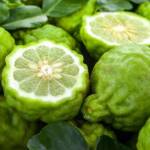 qualities. Bergamot is known to have calming effects on those who drink it. Also the compound bergamot boosts a person’s mood and thus helps to overcome stress, anxiety and depression.
qualities. Bergamot is known to have calming effects on those who drink it. Also the compound bergamot boosts a person’s mood and thus helps to overcome stress, anxiety and depression. - Boosts Energy Levels: Earl grey tea contains caffeine in good quantities. Caffeine in the tea is a great energy booster and provides almost instant energy to the body.
- Helps in weight loss: Earl grey tea is a great beverage for weight loss. Since this tea contains citrus extracts, it is considered as one of the most popular means of weight loss. The citrus extracts help in improving the rate of metabolism in the body which aids in burning more fats quickly eventually resulting in weight loss.
- Fights cancer: Earl grey tea is rich in antioxidants. These antioxidants fight the free radicals that can damage the cells resulting in cancer. Consumption of this tea provides the body with the required amount of antioxidants that help to fight the cancer and other life threatening diseases.
Balance Line soap
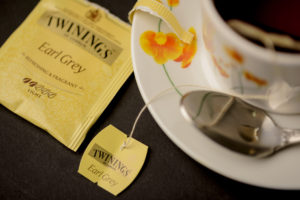
Of course some of the benefits only help if you ingest the contents as a drink but some were good enough for us to consider in a bar of soap. We set out to make a bar of soap surrounding the properties of the bergamot orange but suitable for persons with Dry Skin… A few weeks late Mr Grey was born.
This Balance line soap works wonders for persons with dry skin. Its has not Essential oil in it to avoid drying out the skin. Its highly moisturizing and as we found out haphazardly it works wonders on persons with eczema.
Making Bahamas Soaps or rather soaps inspired by the Bahamas and its people has become a joy for our company. We look forward to making more as the years roll on by.
Do you have an idea for a Bahamian inspired soap? please let us know your ideas we would love to hear from you.
Tea infused cold process Soap Making Safety
The one key point that is stressed as we teach and we will stress here at Bahamas Candle and Soap is the importance of safety in candle and soap making.
When making soap you will be working with super heated materials with the potential to cause major skin burns. You must be sure that you are properly prepared.
The main ingredient in soap making is sodium hydroxide also known as lye. This corrosive chemical reacts with water and begins to heat up drastically, however this chemical reaction is needed to convert oils into soap.
It is good to make safety procedures a standard and a habit when it comes to making cold process soap. Many soap makers have stated that after making soap for a while it becomes easier and less scary once they stick to safety protocols
Sodium Hydroxide – Lye SAFETY
Sodium hydroxide is an inorganic compound used to emulsify the fats of oils into soap. When used properly in soap there will be no lye left over in the soap as its chemical makeup changes to create the actual soap.
When handling lye be sure to protect your exposed skin. Here are a few items we recommend you have.
- Gloves
- Long sleeve shirt
- Long pants
- Closed toe shoes
- Safety Goggles
These items will ensure if there are any accidents such as splashes you will keep your skin safe from the burning sensation of lye.
NOTE
- Use an appropriate container to hold your lye and to mix your lye water. Heat tempered glass works very well or hard plastic containers.
- When making your lye water remember to add the LYE to the WATER and never the other way around.
- Mix you lye solution in a well ventilated area. The fumes that will arise from mixing water and lye can become noxious to some persons while its chemical scent can burn your nose and make your eyes water.
- Ensure that you are wearing your safety glasses, rubber gloves, long sleeve shirt and pants and close toe shoes. This is to avoid any splashes getting on your skin. Another reason is that if you use a container that cannot handle the heat created by the lye water solution it could break and the entire solution can get on your body.
- Learn more about lye safety HERE
Oils
In some recipes and depending on where in the world you live you may have to pre heat your oils. Oils can also burn the skin when heated hence ensuring that you are safe from splashes or spills is very important.
This recipe uses Olive and Coconut and cocoa butter
Earl grey tea infused cold process soap recipe Ingredients
| Ingredient | Pecentage | Weight |
|---|---|---|
| Olive Oil | 50% | 16.5oz |
| Coconut Oil | 25% | 8.25oz |
| Sweet Almond Oil | 10% | 3.30oz |
| Shea Butter | 10% | 3.30oz |
| Castor Oil | 5% | 1.65oz |
| Distilled Water | 11.55oz (14oz) | |
| Lye | 4.60oz | |
| Earl Grey Tea | 3 bags | |
| Essential Oil (optional) | 1oz | |
| Sodium Lactate (optional) | 2tsp |
Tools needed for earl grey tea infused cold process soap making
Infrared Thermomete
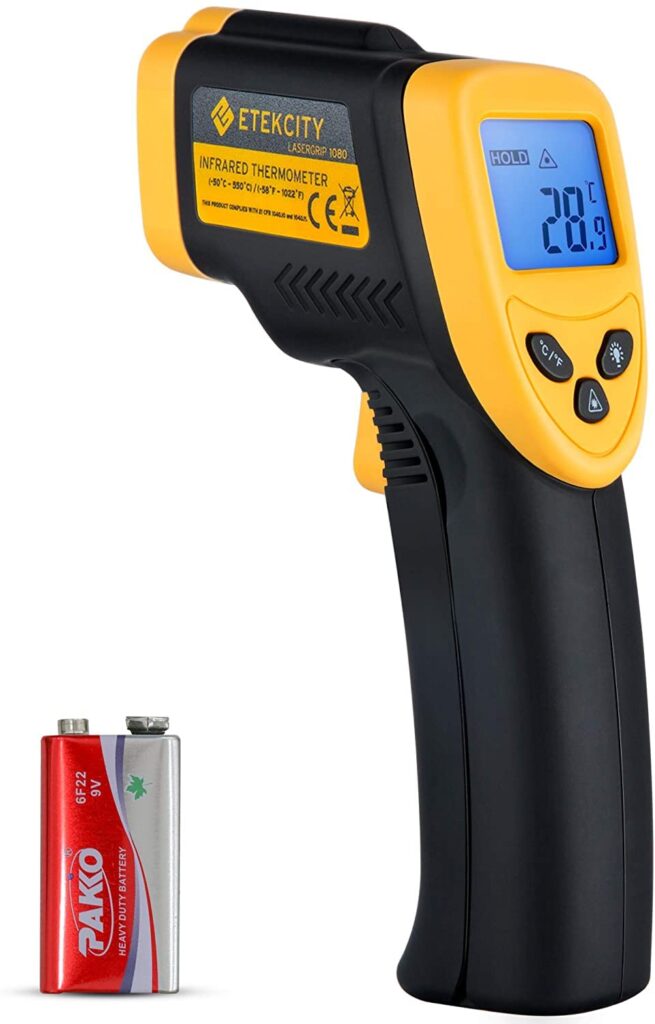
Steel whisk

Measuring spoon 1oz
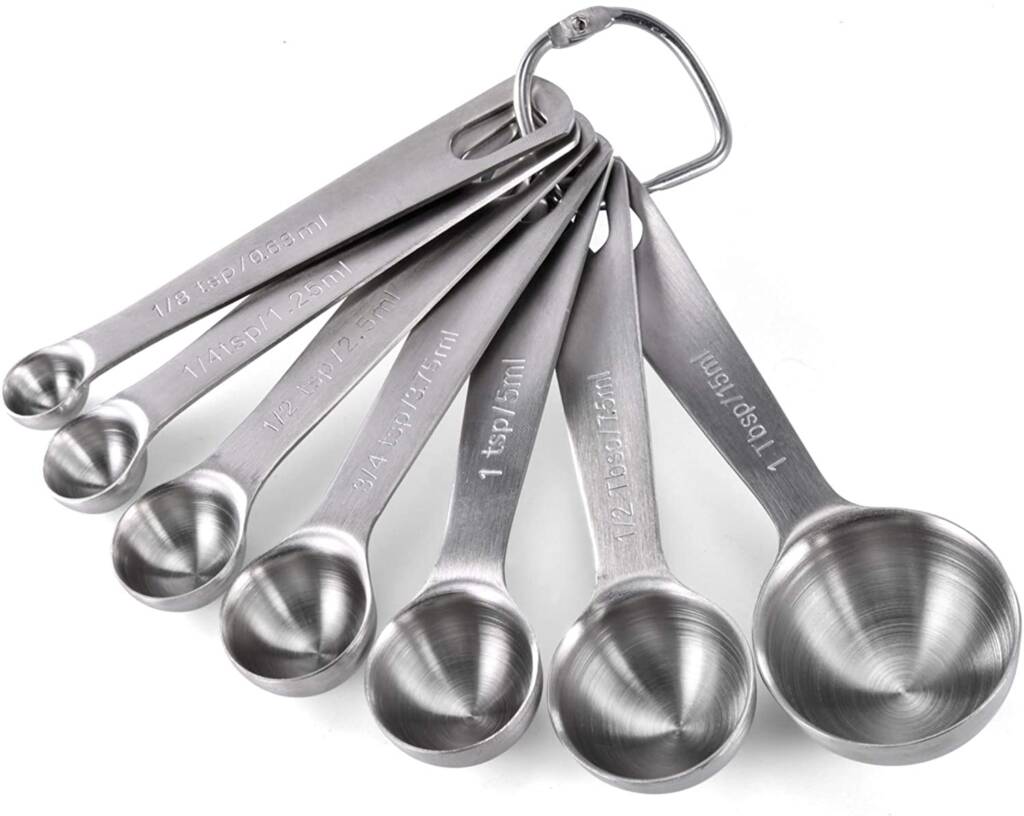
42oz loaf mold

Food grade scale
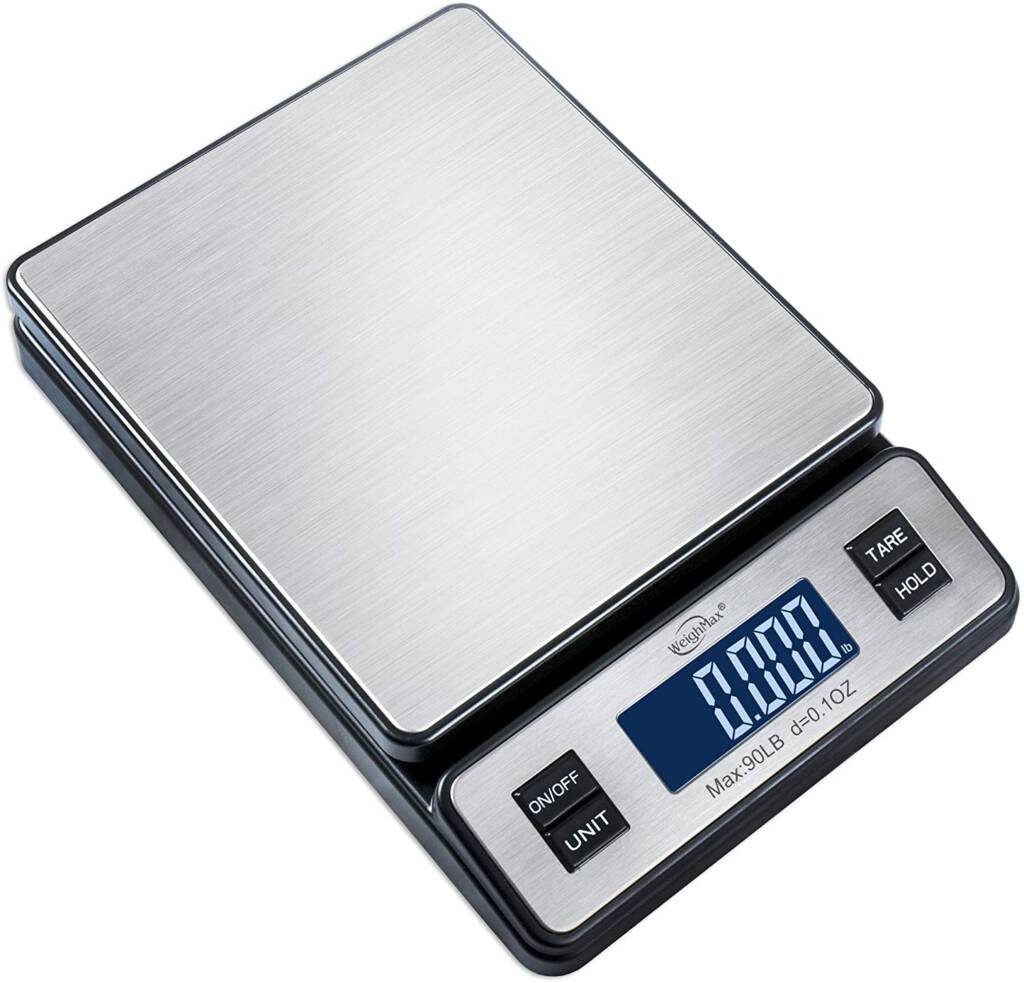
Instructions to make Tea cold process soap
Making cold process soap using infused tea is typically very simple. However notation must be taken on the type of tea used. Some commercial tea bags have some kind of sugar in the tea. This can be a problem because sugar can cause the soap to heat up more than usual.
Using earl grey tea a good beginners start as the tea is made from dried leaves with not other additives that could affect the overall soap.
Follow the instructions to preparing the ingredients and using the tools to make this tea infused soap.
1 – Lye water preparation for cold process soap making
Remember to observe the safety protocol for handling sodium hydroxide.
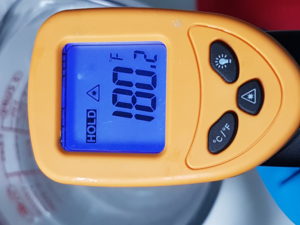
- Using your measuring cup on you scale zeroed out, pour in14oz of distilled water.
- Use your second measuring cup to weigh out 4.6oz of sodium hydroxide/lye.
- Take out 3 bags of earl grey tea.
- Add the 14oz of water in pot to heat and add 2 tea bags to the water. Cover the pot. The use of 14oz of water will allow some loss of water via evaporation as the recipe requires 11.55oz of infused tea water.
- Allow your heated tea to cool before adding the lye typically to room temperature.
- Once your tea has reached room temperature add your lye to the tea infused water (never the other way around) slowly and mix using the steel whisk until dissolved. Check the temperature of the lye mixture once the lye has been dissolved. It can be up to 200 degrees fahrenheit.
- Optional – If you decide to use sodium lactate now is the time to add 2tsp to the lye water mixture.
- Set your infused lye water to the side to cool but safely away from any accidents such as bumping the table or knocking over the measuring cup. (NOTE – depending on your location and ambient heat, you can place your lye water in the refrigerator to cool quicker. You will want to check on it every 5 minutes taking its temperature using the infrared thermometer. 120-130 degrees fahrenheit is a good temperature that you are looking for.)
- To ensure an even harder bar and to make it easier to remove from the mold add the 2tsp of sodium Lactate to the lye water mix.
Now that you have prepared your tea infused lye water you can get back to finalizing your preparation of the soap.

2 – Oil preparation for tea infused cold process soap recipe
Using multiple oils can become difficult to manage especially when it comes to combining all the oils together.
If you are unfamiliar with ways to combine multiple oils into one bowl properly you can visit How to combine multiple oils for soap making and familiarize yourself with the techniques involved.
Which ever technique you use make sure you add all of your oils together in the 2qt large mixing bowl. If you did not read the article on adding oil you may have missed the part about ensuring all your oils are melted and clear.
You will need your oils in a liquid state and at the right temperature roughly between 80-120 degrees fahrenheit, before continuing. Again if you are not sure how to do this skip over to the other article How to combine multiple oils for soap making.
With all you oils combined in the mixing bowl I find it a good practice to stir the oils together either with a spatula or more vigorously with a stick blender the more oils used. This is to ensure that the oils marry well within the mixture and are prepared for the lye water.
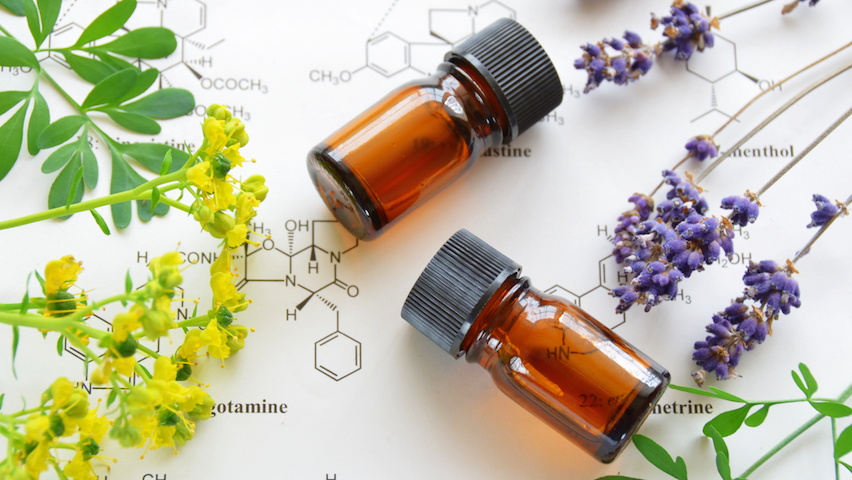
3 – Add Essential Oil (optional)
The best EO for this recipe is bergamot essential oil, however it is rather expensive. You can use lemongrass essential oil if you prefer a scent.
Measure out the essential oil in a glass container. (do not use plastic container for essential oils) When measuring use wax paper on top of your scale to avoid the oil spilling on the plastic of the scale. Essential oil eats at plastic and will destroy your scale.
Make it a habit when using essential oil to use a glass container. Add the essential oil to your oil mixture in the mixing bowl and stir. Now you are ready to add your tea infused lye water.
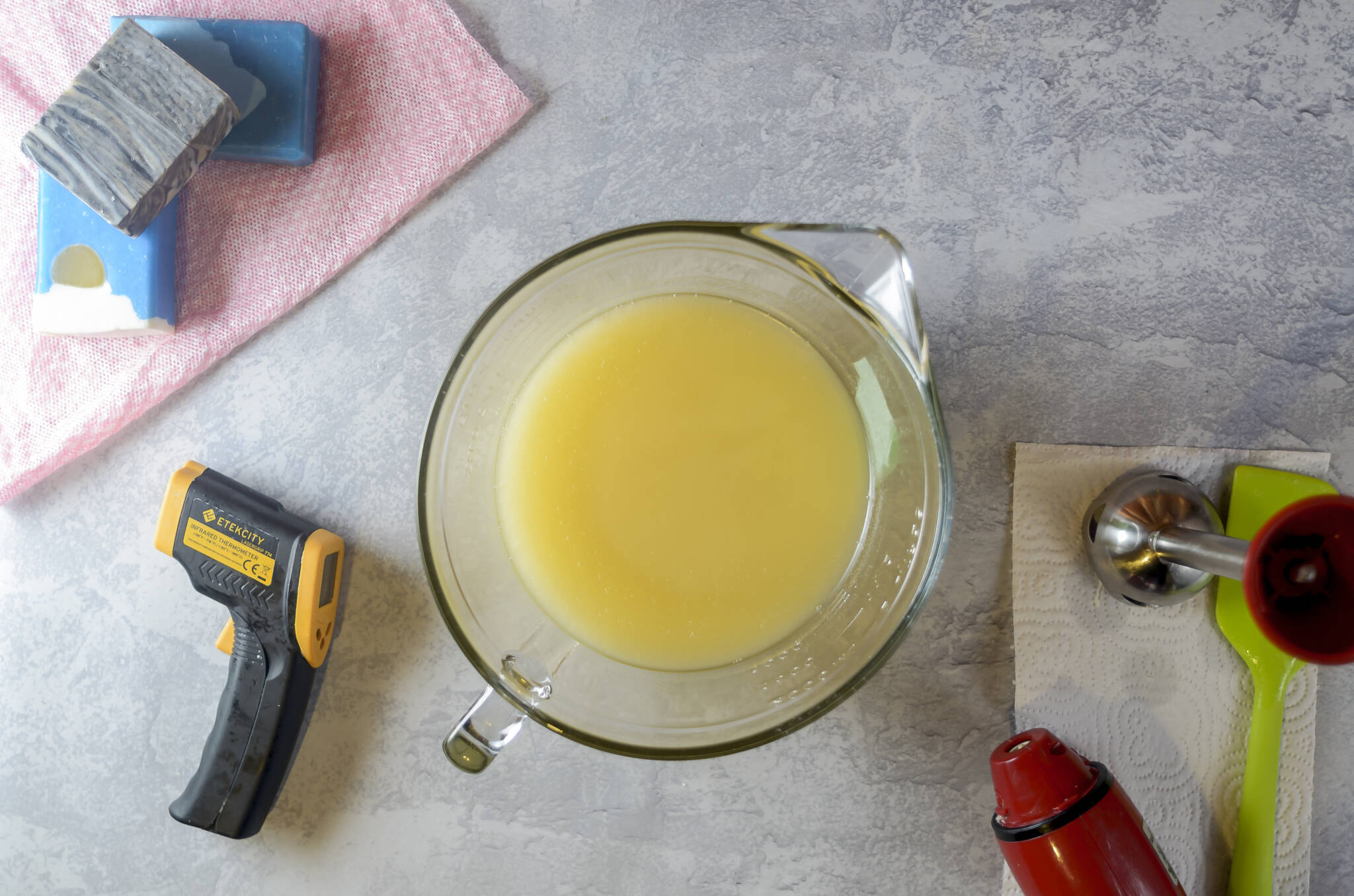
4- Oil and Lye Mixture combination
- Take note of the temperature of your oils and your lye water. At this point they both should be between 80-100 degrees fahrenheit but closer to 100-120.
- With your stick blender in your oils well burped, pour your lye water into your oil mixture along the stick blender to prevent bubbles.
- Begin to blend the lye water and oils together with short pulses from your stick blender and then longer sustained mixing.
- Mix your batter until you have reached a light trace.
- Open the unbrewed tea bag to gain access to the dried leaves.
- Add the tea contents directly to the batter and stir well with the spatula or whisk to incorporate it into the soap making process.
- Continue to sick blend the soap batter to a medium thick trace. At this point the batter is still fluid enough to pour into your mold easily. Remove the stick blender and continue to mix with your spatula or whisk to keep the batter fluid.
- Pour mixture into the loaf mold, and ensure you scrape out any remaining batter into the mold. Tap the mold on your work bench to remove any bubbles from the poured batter. You can design the top as needed
- Depending on ambient temperature of your work room, cover with cardboard or wax paper over top then put to bed with towels to go through trace. (NOTE – If in a room at 75deg or more leave open and exposed as putting it to bed with a covering will most likely cause it to overheat and volcano. If in a cooler room cover the soap to let its own heat help take it to gel phase for brighter colors.)
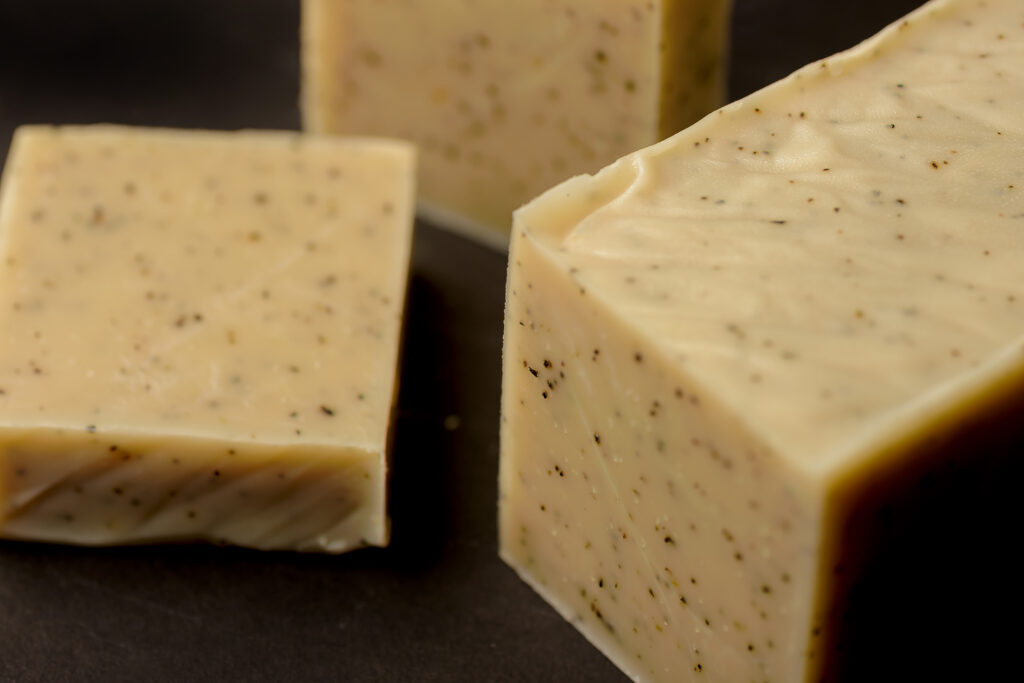
5 -Removing your soap from the mold
- Let you soap sit for 48 hours before removing from the mold.
- Check its readiness to be handled and removed by pressing lightly on the top of the soap. It should be slightly hard to the touch, if you used sodium lactate it will make unmolding easier. (NOTE because there is over 50% soft oils in this recipe it will take longer to harden and unmold)
- After 48 hours and the soap has not hardened enough, you can place in the refrigerator for an hour to cool to a point to make it easier to remove from the mold without damaging the soap.
- After cooling remove the silicon and soap from the wooden mold by turning the mold upside down. The silicone part should slide out easily.
- Pull the sides of the silicone mold away from the soap slowly. If it looks sticky as you pull place the soap back into the refrigerator. If not continue to gently pull the sides away from the soap.
- Once all four sides are pulled away turn the silicone mold upside down and while pulling at the two narrow end of the silicone press down gently on the bottom of the silicone onto the soap.(this will help release the soap from the mold)
- As the soap begins to slide out of the mold help it along the way by pushing on the bottom of the mold until it slides completely out of the mold.
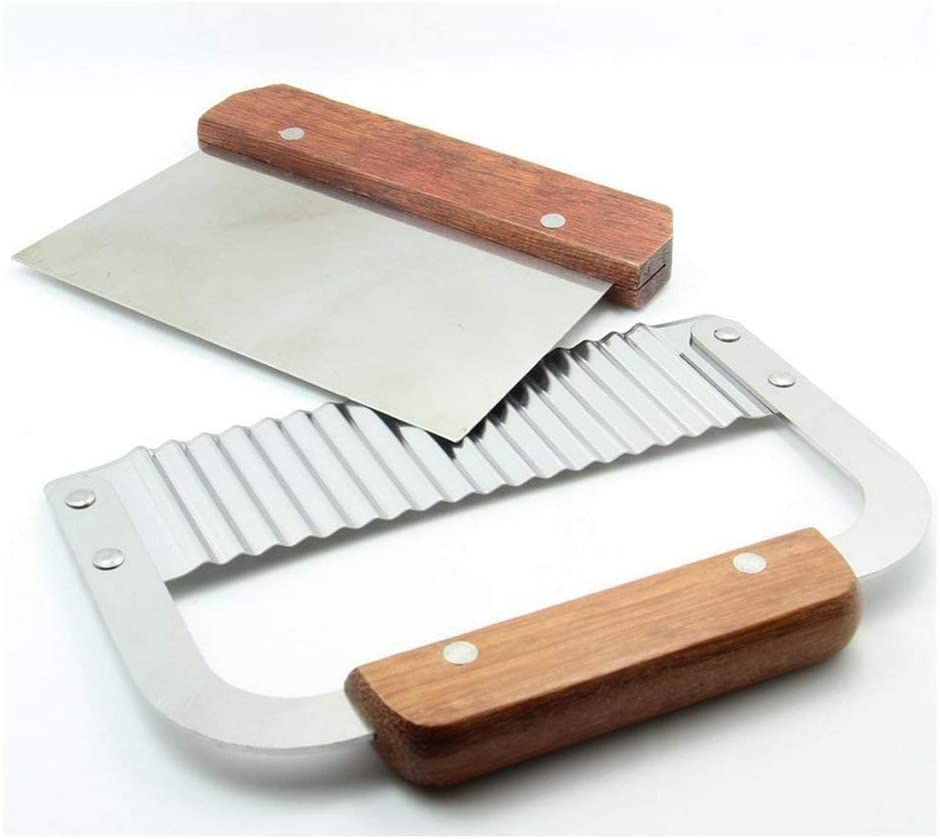
6 – Tea infused soap cutting and curing process
Cutting your soap is completely up to you. You can cut as thick or as thin as you like. The most standard thickness is often at 1 inch. For a typical soap loaf this will yield 10 bars of soap.
- Cut your soap using a soap cutter, a knife dedicated to soap cutting or a wire cheese/soap cutter.
- Cut them 1 in thick, or to any thickness you like (Just do not leave it as one full loaf for long, the longer you wait the harder it becomes to cut the soap because it will begin to cure and get harder)
- Let your soap bars sit in a cool dry place for 6-8 weeks to cure. (Curing removes the excess water from the soap, this causes the soap to last longer.)
- Rotate your soap, changing the part that it sits on around to allow even evaporation of water from your soap.
- If you want to track its rate of curing you can weigh the soap bar directly after cutting it and over the next few weeks weight it again. When the weight becomes negligible to track your curing process has completed.
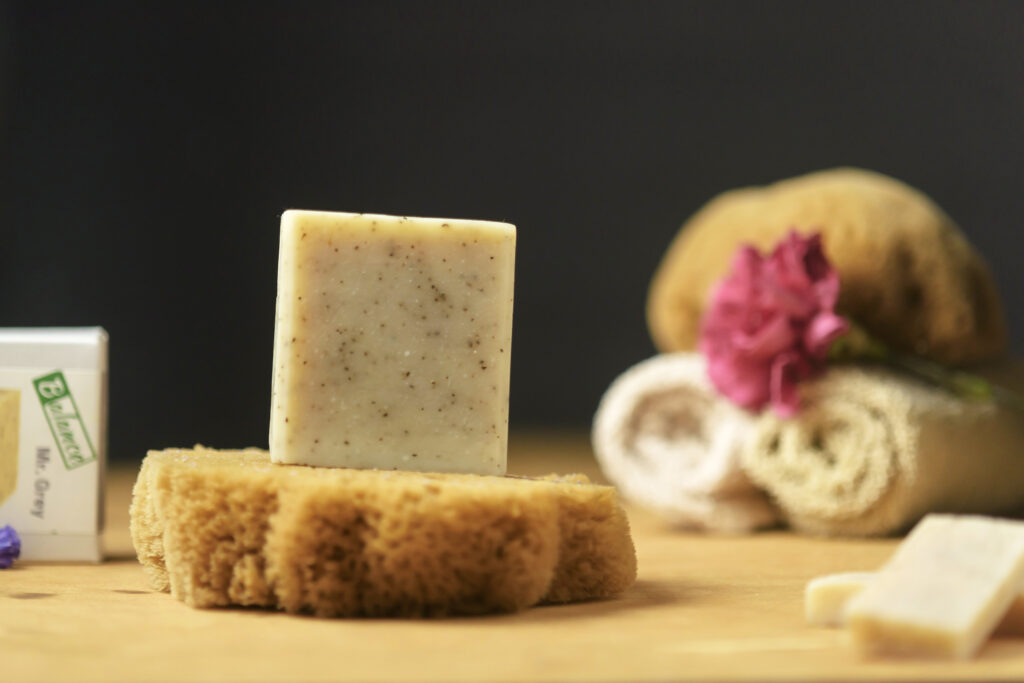
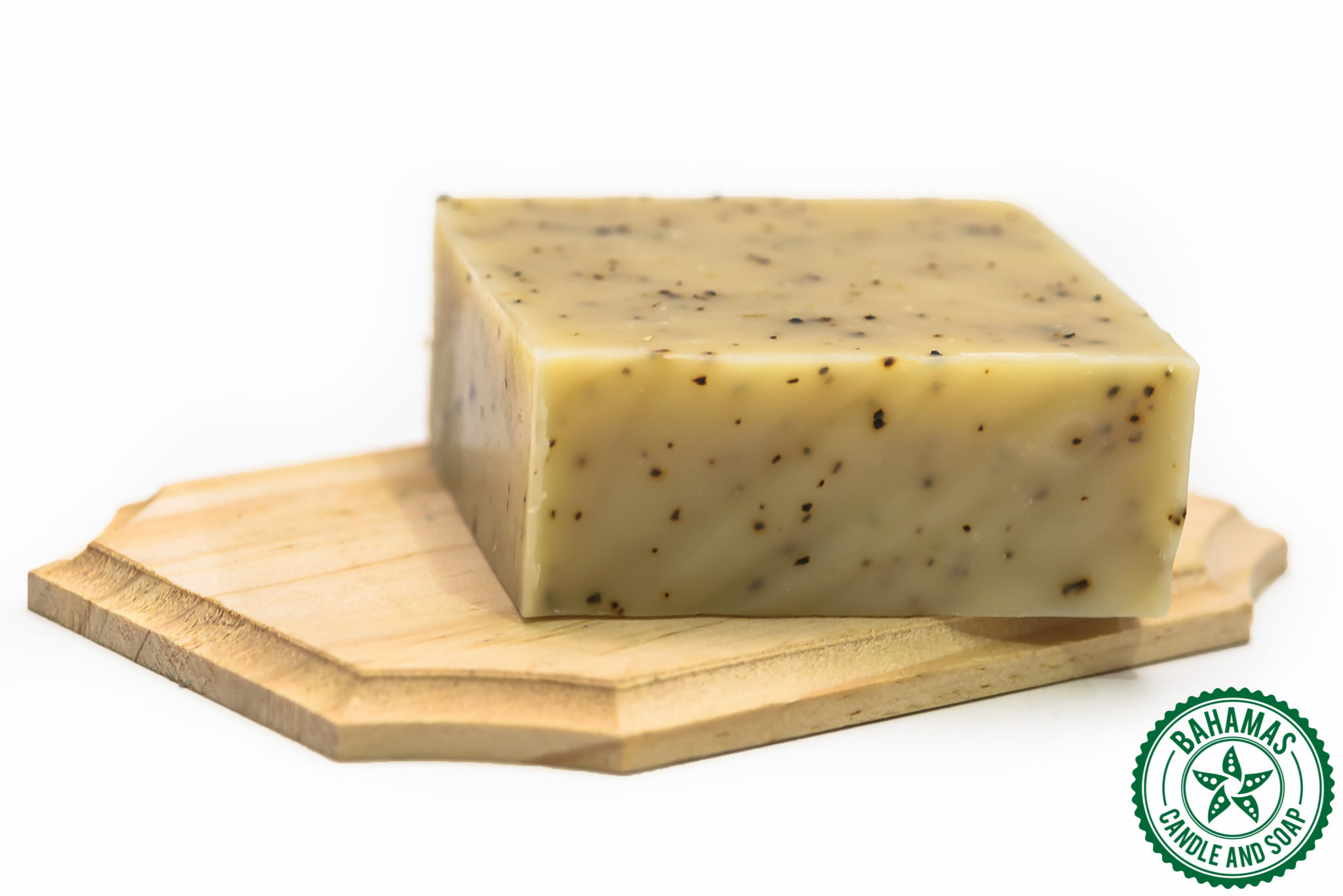
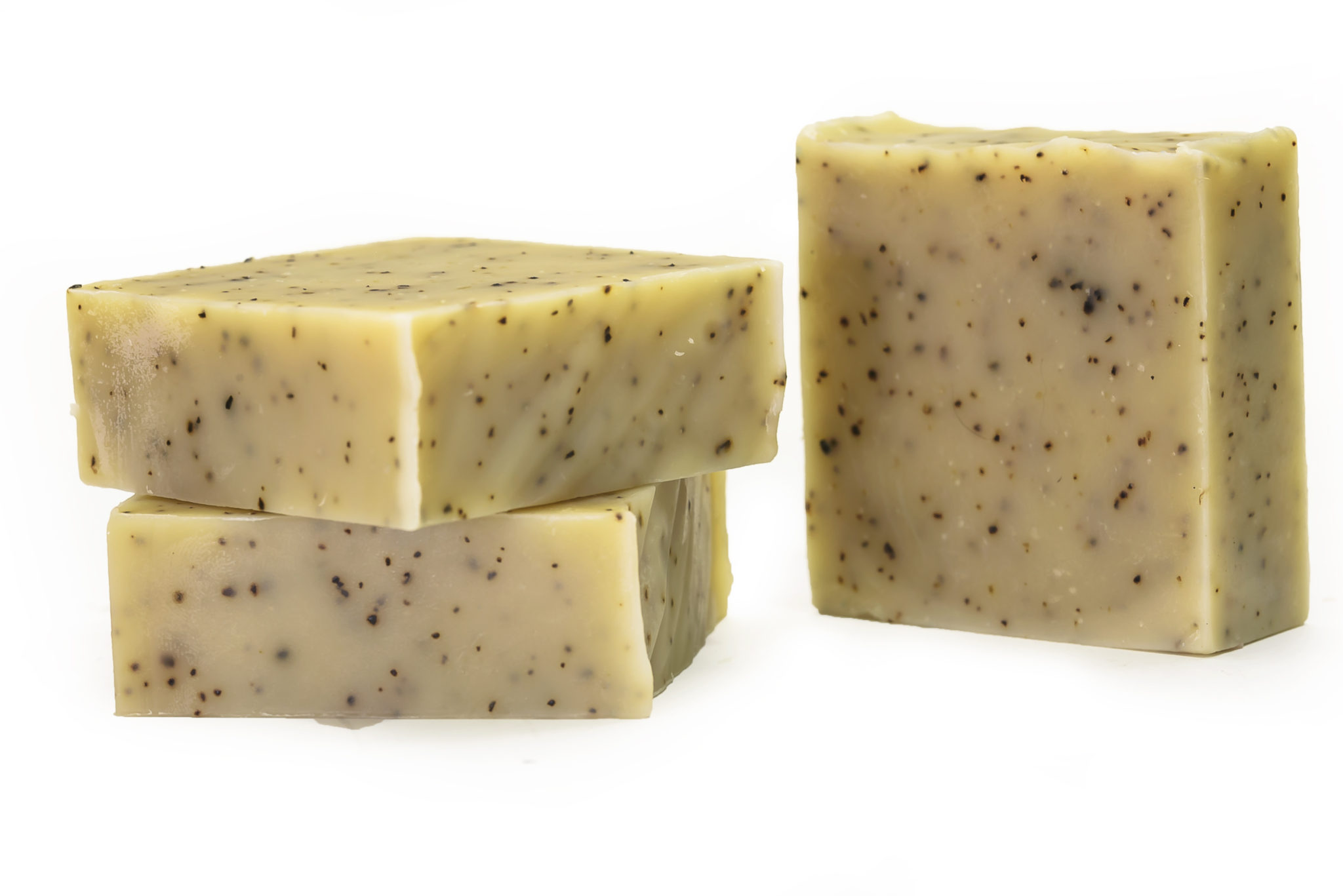
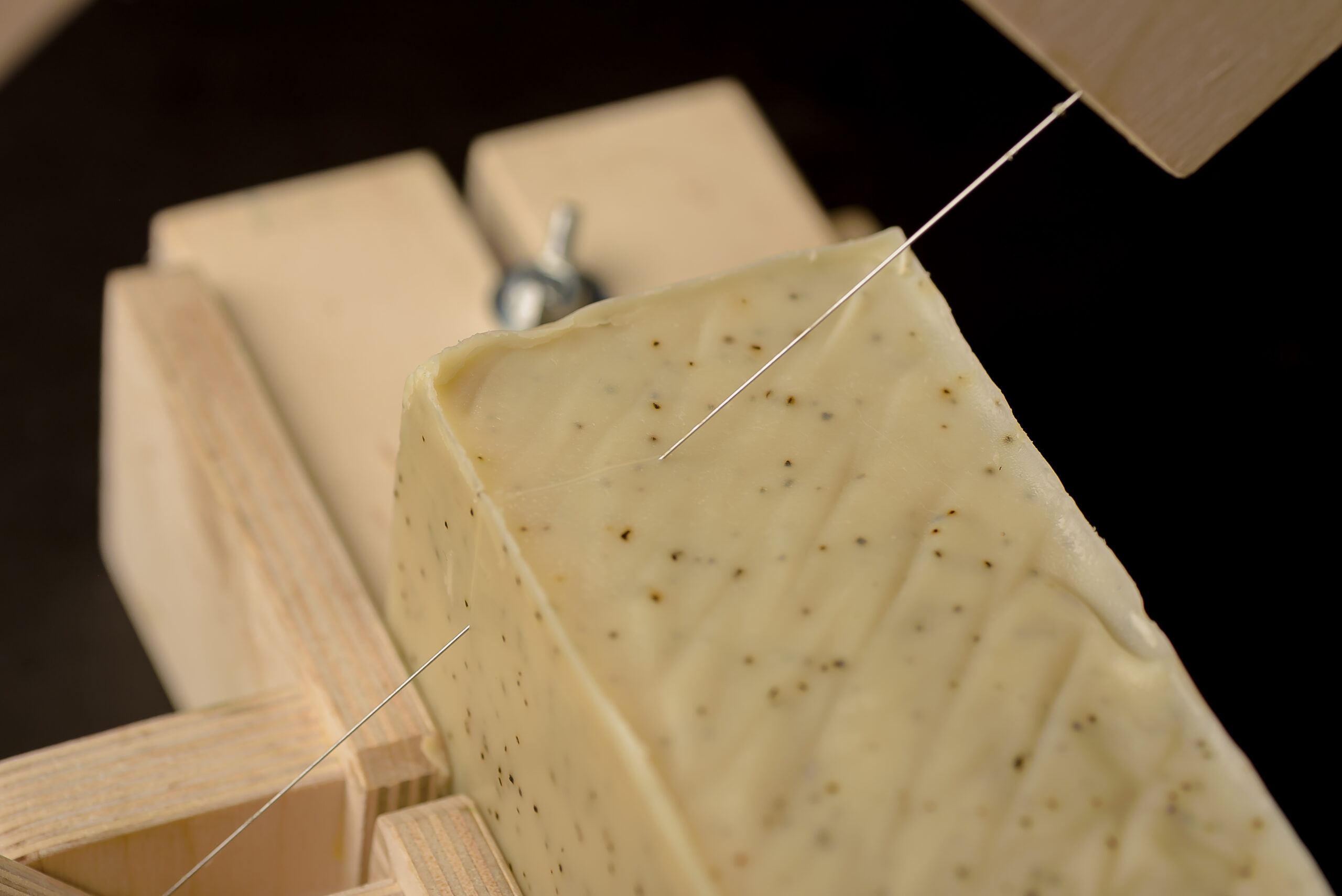
Congratulations on making your Earl Grey Tea infused cold process soap
There are so many natural teas out on the market or teas you can make yourself.
The process will be the same with those teas as well. You can make adjustments as you like to make this recipe your own.
The key to tea infused soap is the brewing of the tea and using that brew as the liquid that you dissolve your lye into to make your lye water. As usual just ensure the tea has not sugars in it that may cause your soap to act differently than normal.
We would love to hear your success stories or if you are having trouble we would love to help you our.

